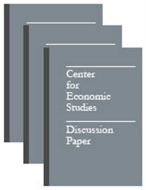
An official website of the United States government
Here’s how you know
Official websites use .gov
A .gov website belongs to an official government organization in the United States.
Secure .gov websites use HTTPS
A lock (
) or https:// means you’ve safely connected to the .gov website. Share sensitive information only on official, secure websites.
-
//
- Census.gov /
- Library /
- Census Working Papers /
- The Economic Geography of Lifecycle Human Capital Accumulation: The Competing Effects of Labor Markets and Childhood Environments
The Economic Geography of Lifecycle Human Capital Accumulation: The Competing Effects of Labor Markets and Childhood Environments
The Economic Geography of Lifecycle Human Capital Accumulation: The Competing Effects of Labor Markets and Childhood Environments
Abstract
We examine how place shapes the production of human capital across the lifecycle. We ask: do those places that most effectively produce human capital in childhood also have local labor markets that do so in adulthood? We begin by modeling wages across place as driven by 1) location-specific wage premiums, 2) adult human capital accumulation due to local labor market exposure, and 3) childhood human capital accumulation. We construct estimates of location wage premiums using AKM-style estimates of movers across U.S. commuting zones and validate these estimates using evidence from plausibly exogenous out migration from New Orleans in response to Hurricane Katrina. Next, we examine differential earnings trajectories among movers to construct estimates of human capital accumulation due to labor market exposure. We validate these estimates using wage changes of multi-time movers. Finally, we estimate the impact of place on childhood human capital production using age variation in moves during childhood. Crucially, our estimates of location wage premiums and adult human capital accumulation allow us to construct estimates of the causal effect of place during childhood that are not confounded by correlated labor market exposure. Using these estimates, we show there is a tradeoff between those places that most effectively produce human capital in childhood and the local labor markets that do so in adulthood. We find that each 1-rank increase in earnings due to adult labor market exposure trades off with a 0.43 rank decrease in earnings due to the local childhood environment. This pattern is closely linked to city size, as adult human capital accumulation generally increases with city size, while childhood human capital accumulation falls. These divergent trajectories are associated with differences in both the physical structure of cities and the nature of social interaction therein. There is no tradeoff present in the largest cities, which provide greater exposure to high-wage earners and higher levels of local investment. Finally, we examine how these patterns are reflected in local rents. Location wage premia are heavily capitalized into rents, but the determinants of lifecycle human capital accumulation are not.
Others in Series
Working Paper
Working Paper
Working Paper
Share
Related Information
Some content on this site is available in several different electronic formats. Some of the files may require a plug-in or additional software to view.
The content on this page includes a link to a non-government website. Our linking to these sites does not constitute an endorsement of any products, services or the information found on them. Once you link to another site you are subject to the policies of the new site.
 Yes
Yes
 No
NoComments or suggestions?


Top

